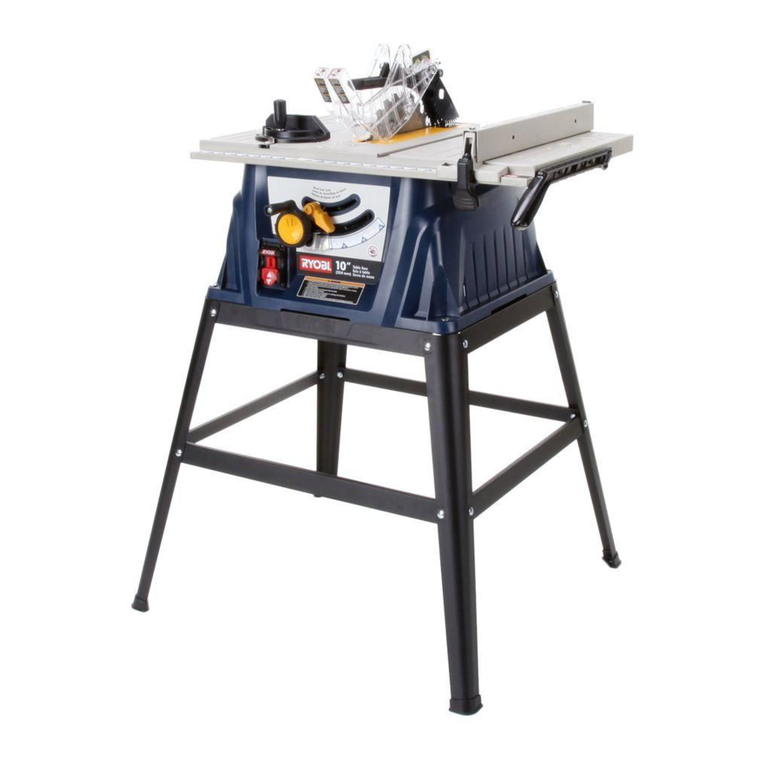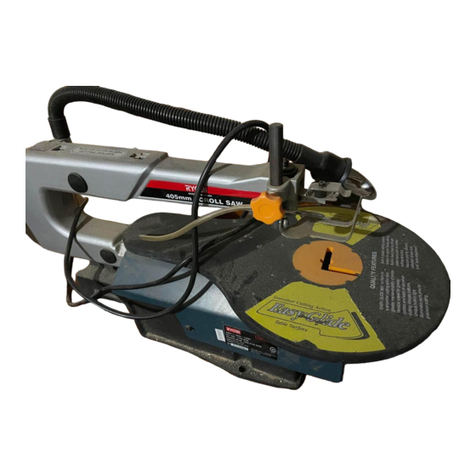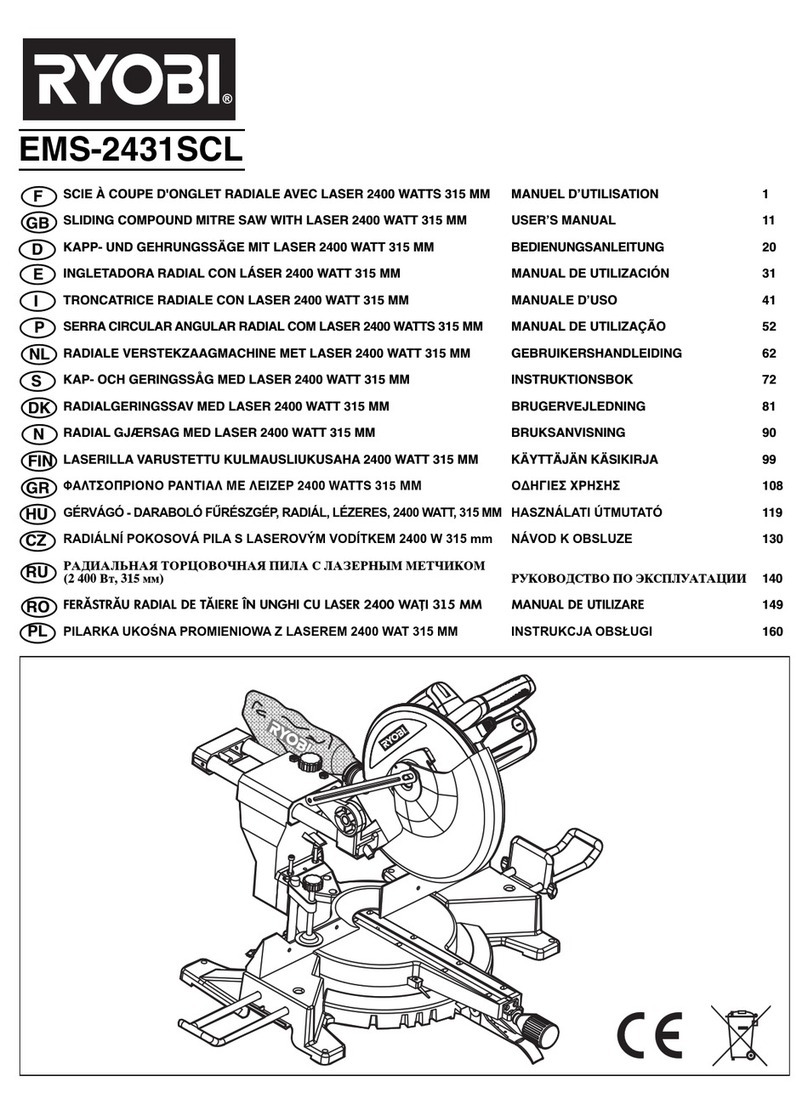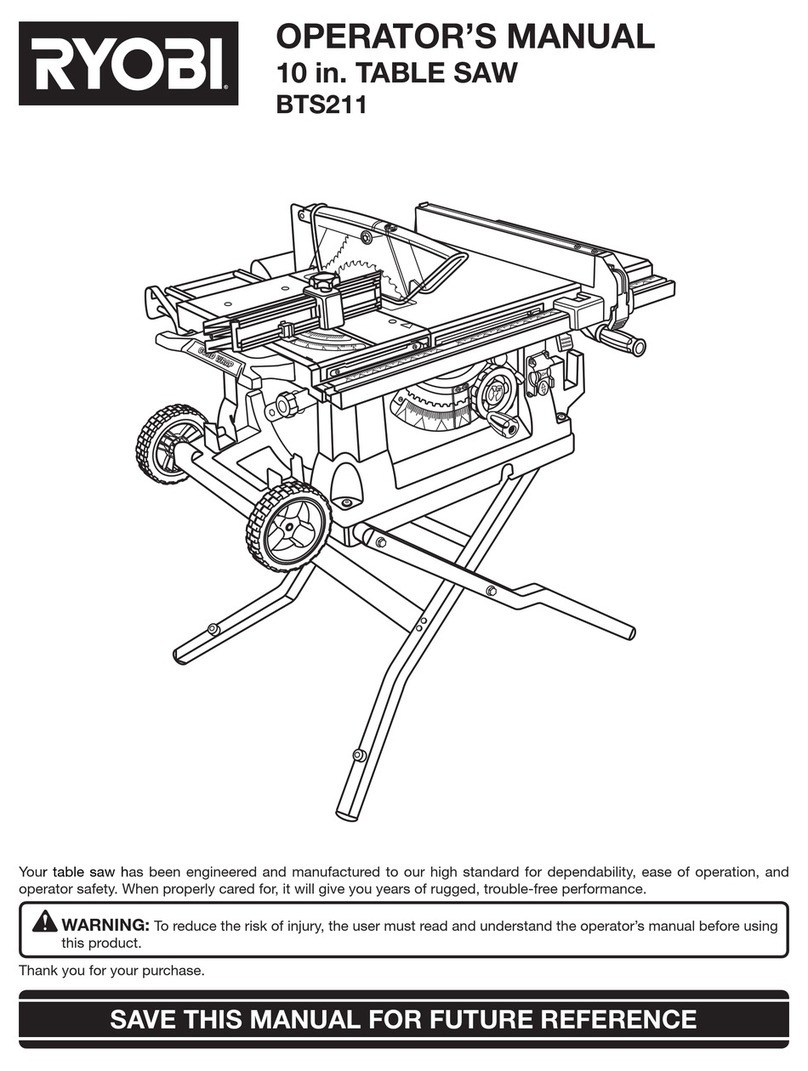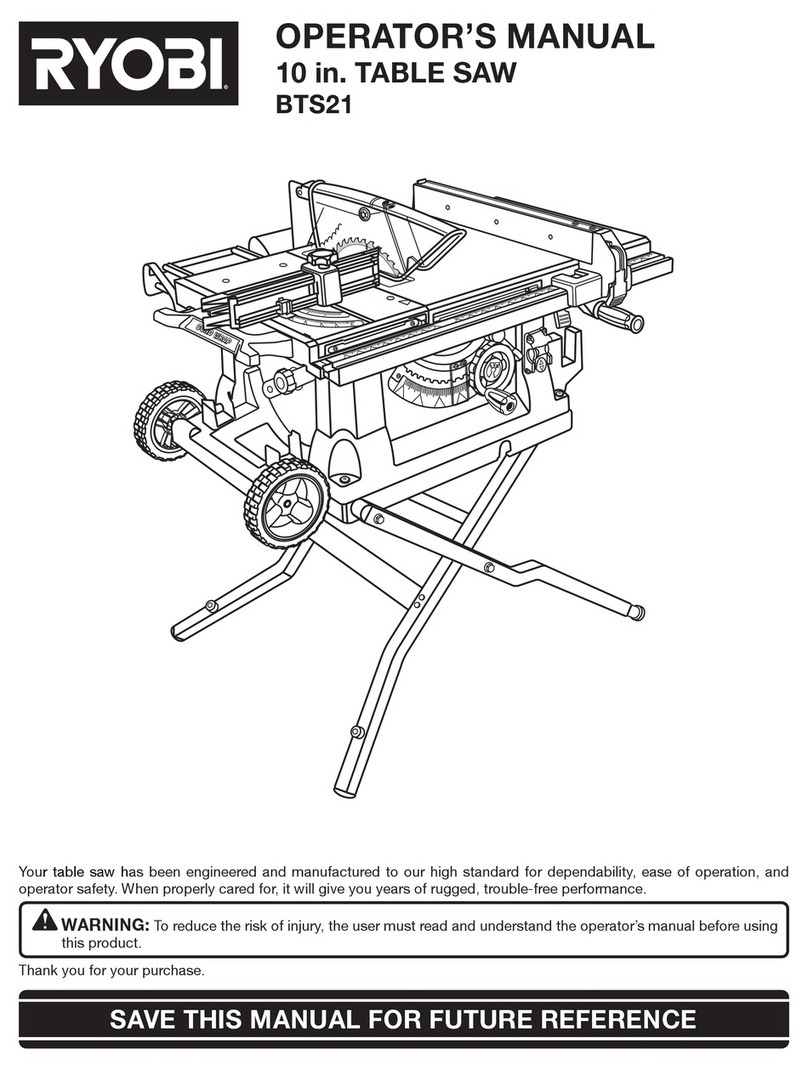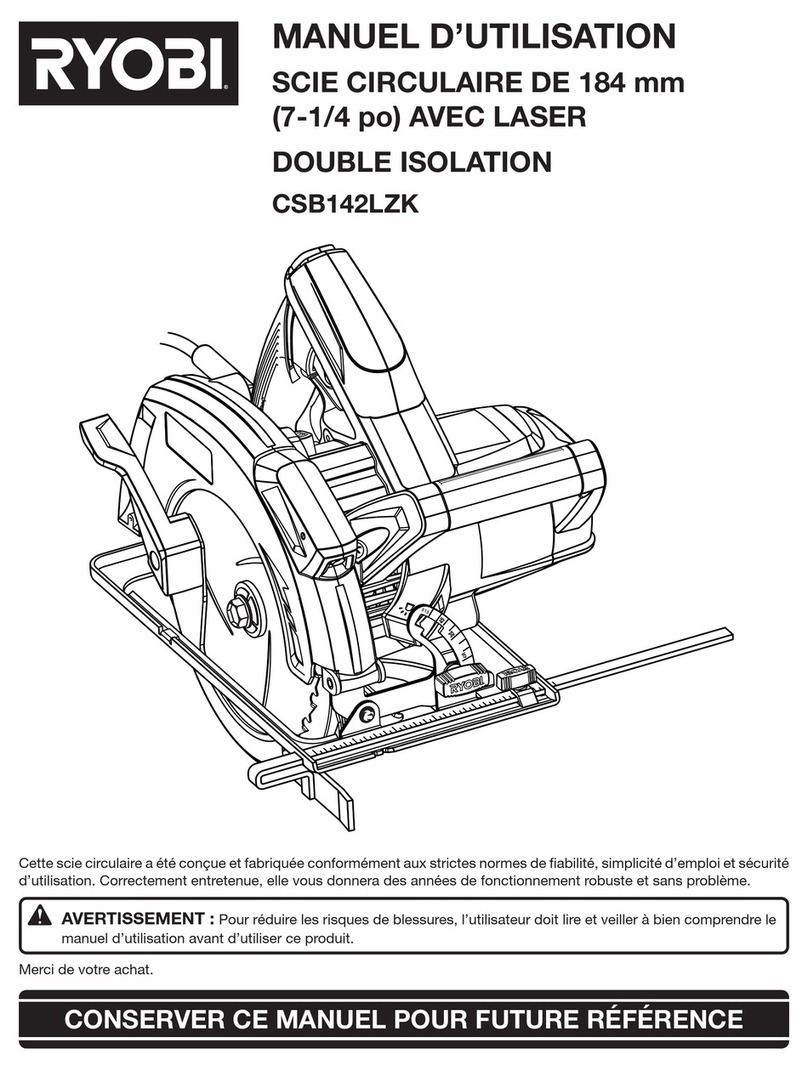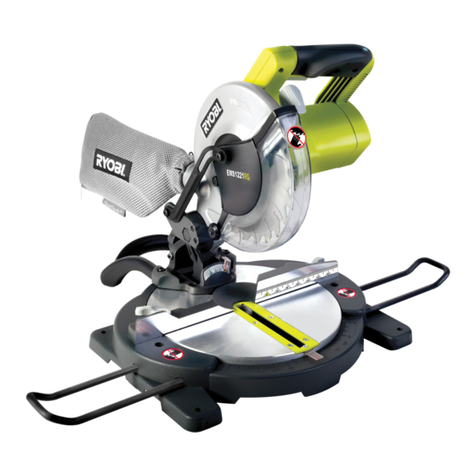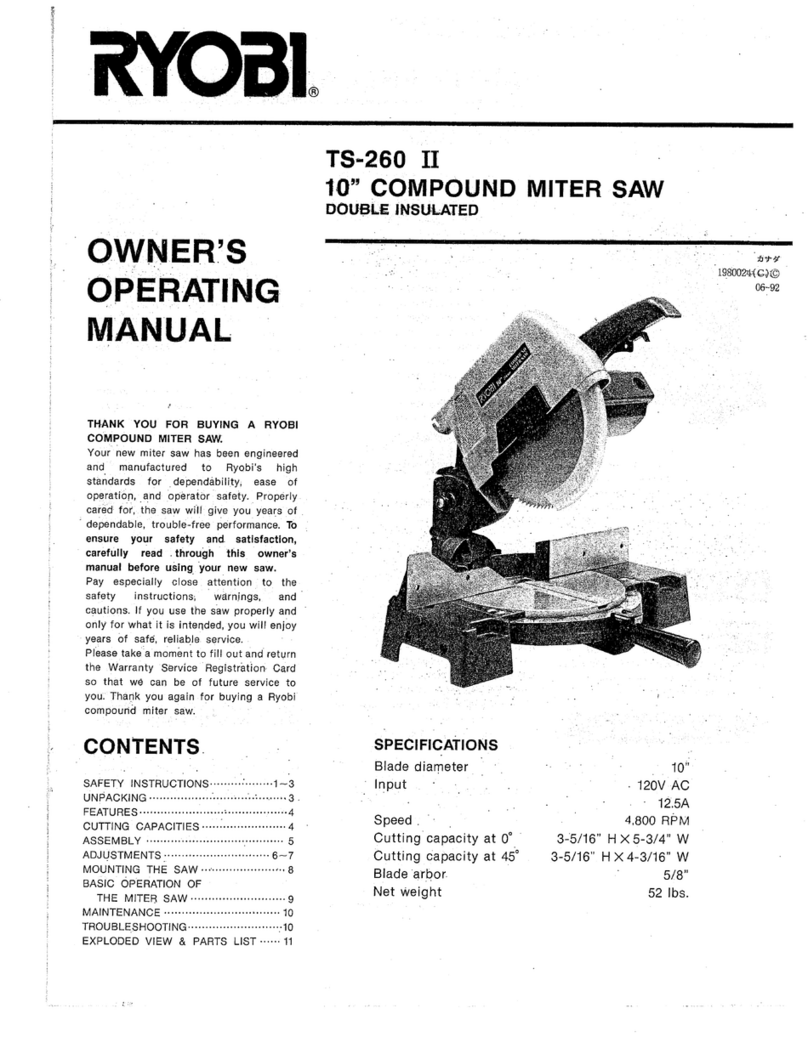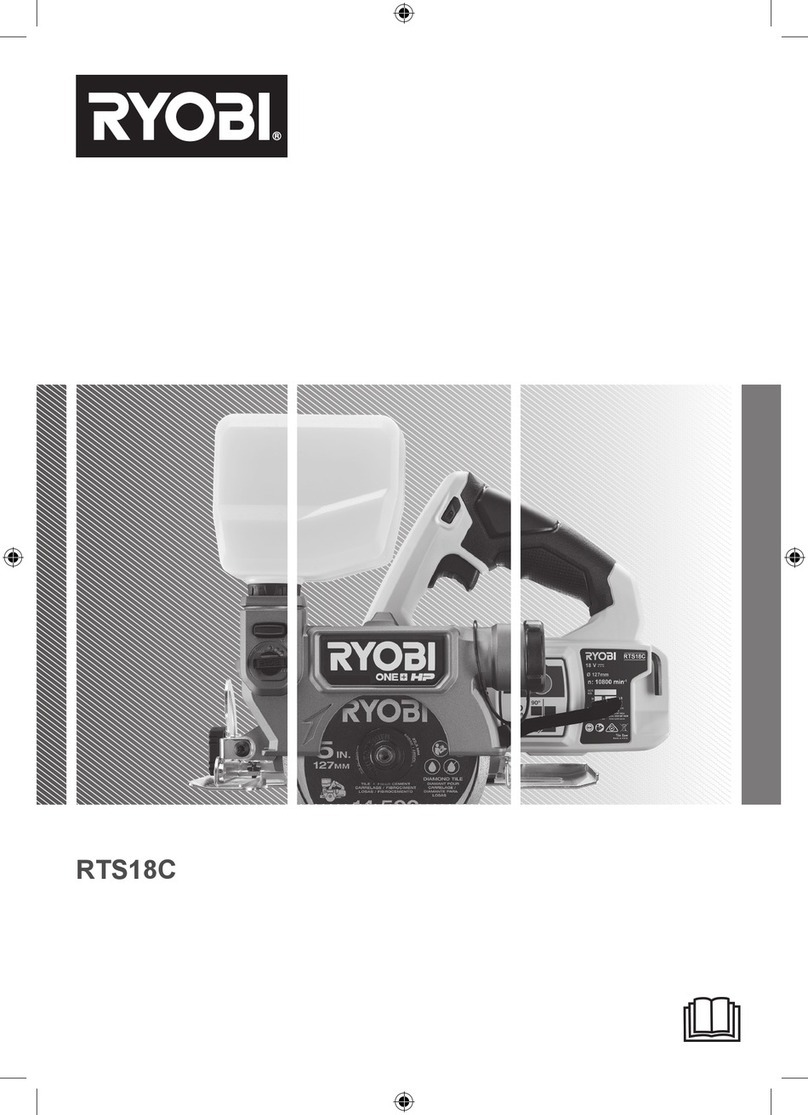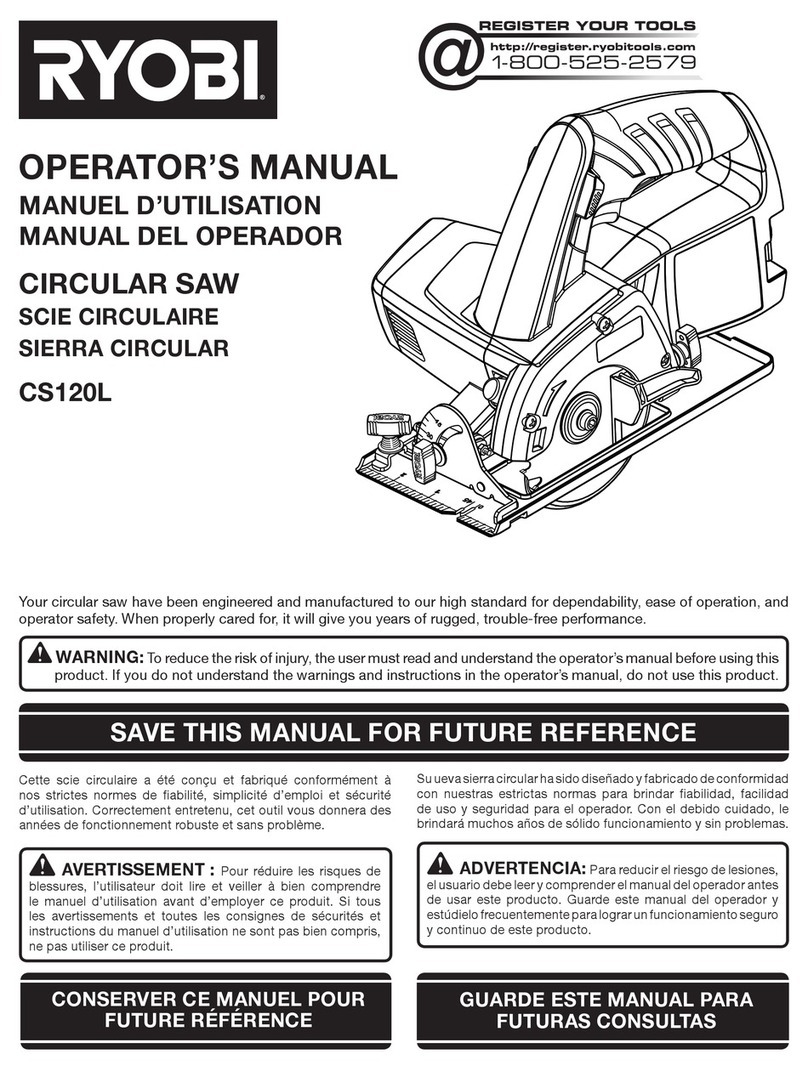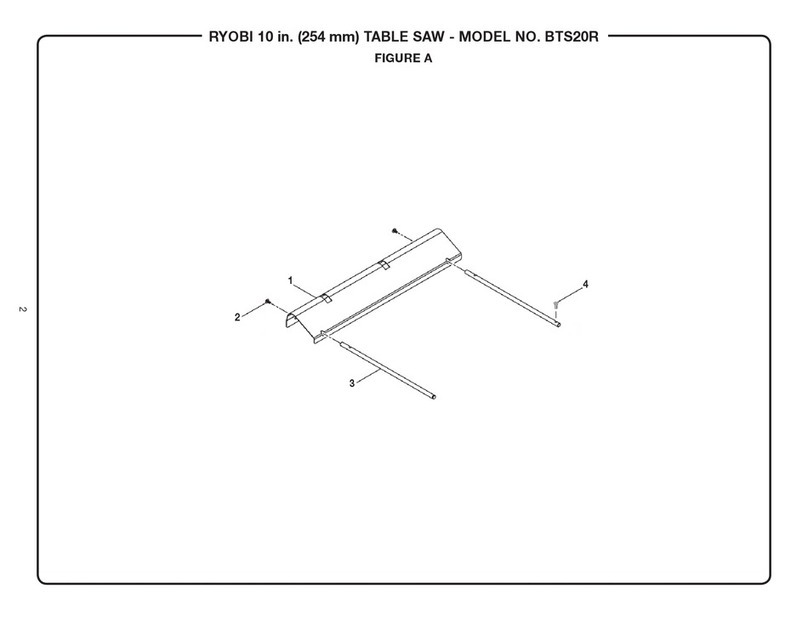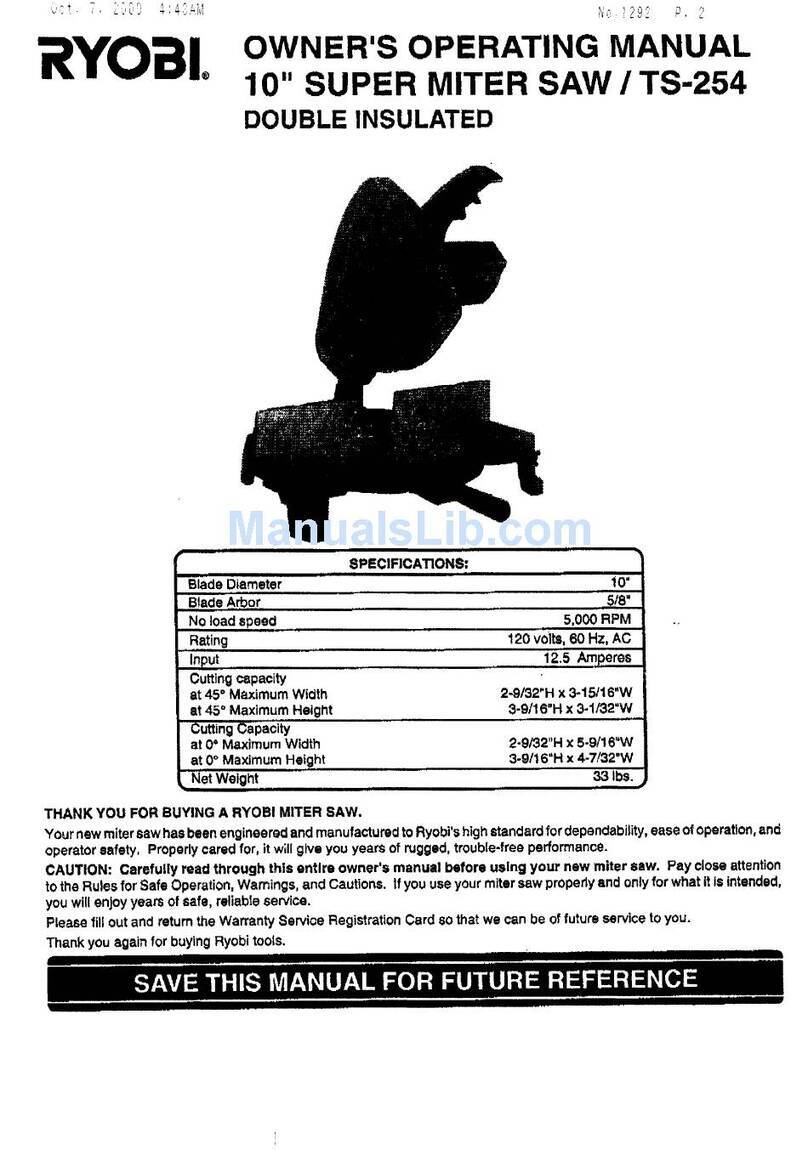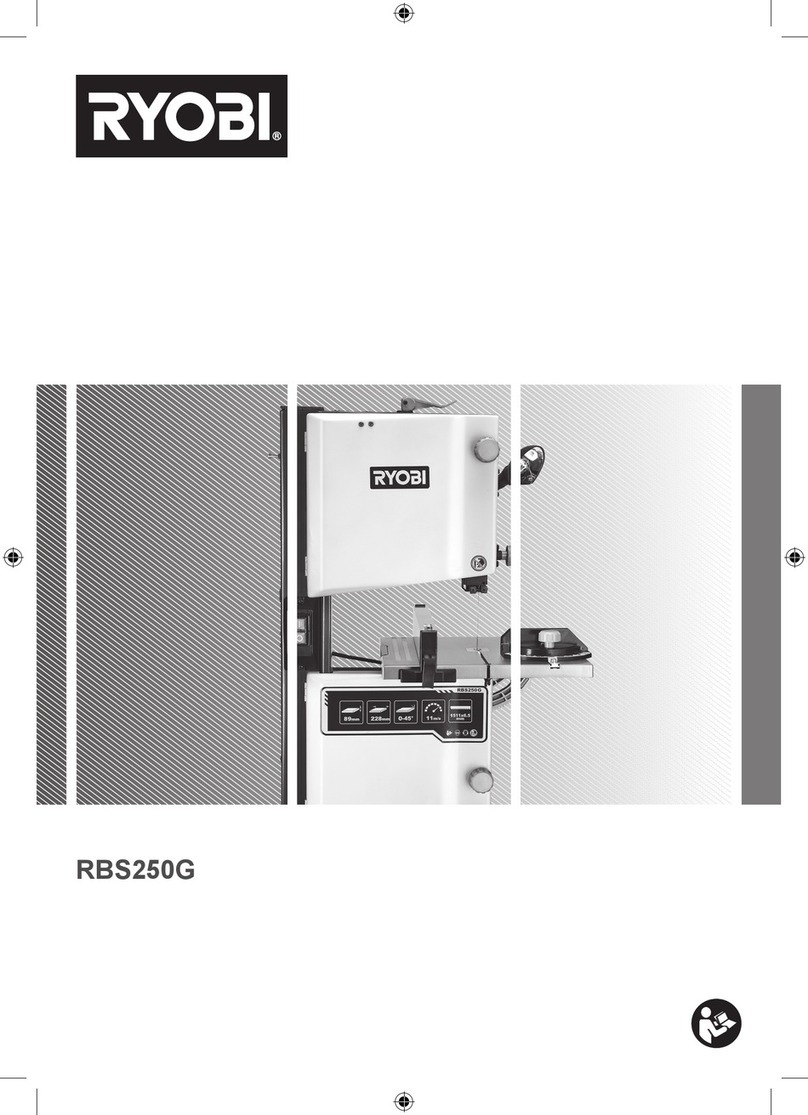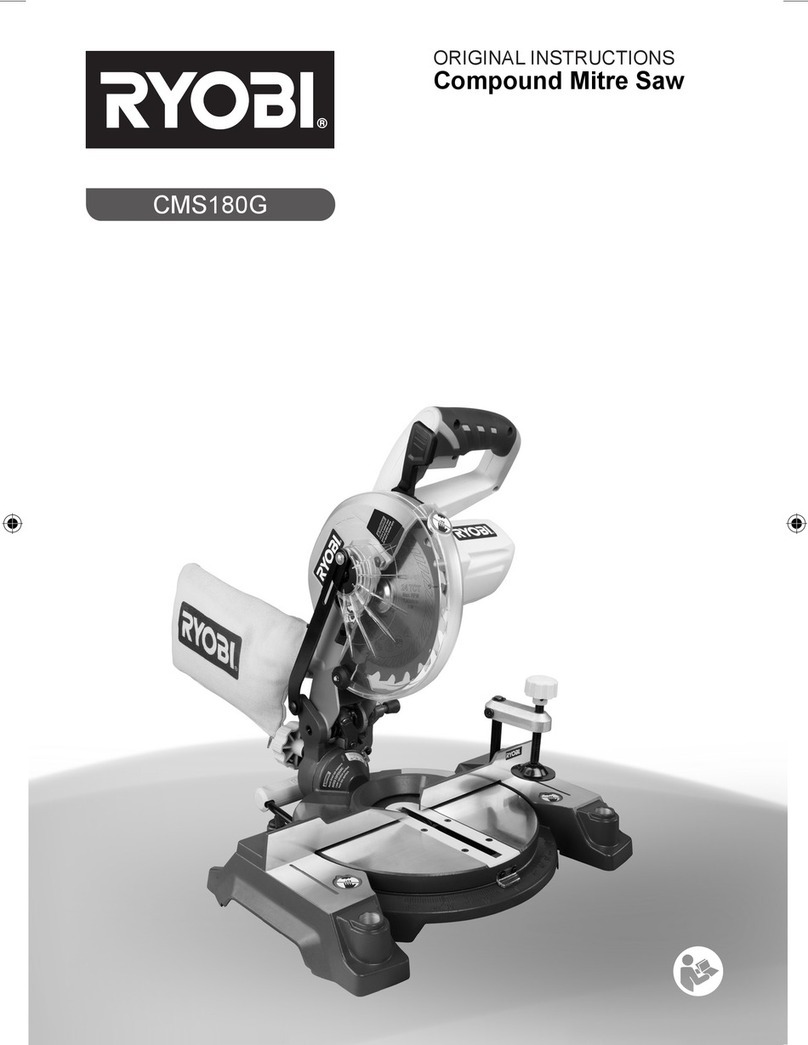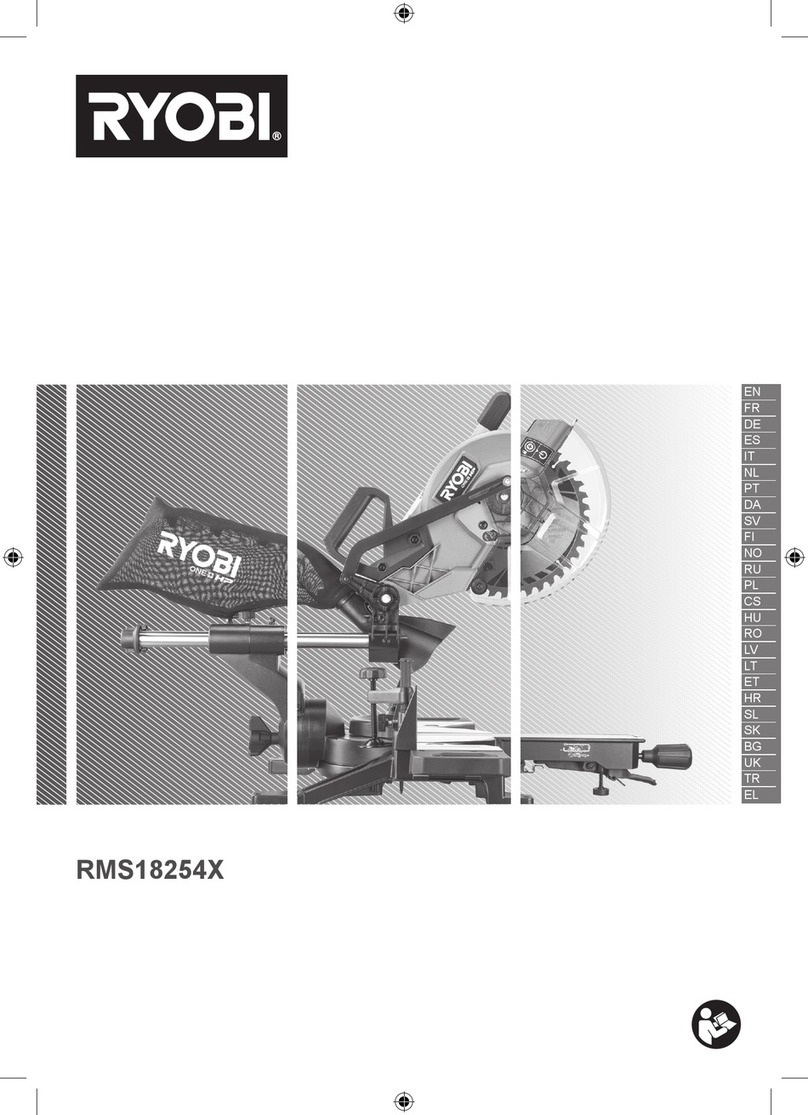
Page 4
RULES FOR SAFE OPERATION (Continued)
Safetyisacombinationofcommonsense,stayingalert,and
knowing how your table saw works. Read this manual to
understand this saw.
READ ALL INSTRUCTIONS
1. KNOW YOUR POWER TOOL. Read the operator's
manual carefully. Learn the saw's applications and
limitations as well as the specific potential hazards
related to this tool.
2. GUARD AGAINST ELECTRICAL SHOCK BY
PREVENTING BODY CONTACT WITH GROUNDED
SURFACES. For example; pipes, radiators, ranges,
refrigerator enclosures.
3. GROUND YOUR SAW. Make sure that your saw is
properlypolarizedwithanapprovedgroundconnection.
4. ALWAYS KEEP THE BLADE GUARD AND RIVING
KNIFE (SPLITTER) IN PLACE and in working order.
5. KEEP WORK AREA CLEAN. Cluttered areas and
benchesinviteaccidents.DONOTleavetoolsorpieces
of wood on the saw while it is in operation.
6. AVOID DANGEROUS ENVIRONMENT. Don't use
power tools in damp or wet locations or expose to rain.
Keep work area well lit.
7. KEEPCHILDRENAND VISITORS AWAY. Allvisitors
shouldwearsafetyglassesandbekeptasafedistance
from work area. Do not let visitors contact tool or
extension cord while operating.
8. MAKE WORKSHOP CHILD-PROOF with padlocks or
master switches, or by removing starter keys.
9. DON'TFORCETOOL. Itwilldothejobbetterandsafer
at the feed rate for which it was designed.
10. USERIGHTTOOL.Don'tforcetoolorattachmenttodo
a job it was not designed for. Don't use it for a purpose
not intended.
11. DRESS PROPERLY. Do not wear loose clothing,
gloves, neckties, or jewelry. They can get caught and
drawyouintomovingparts.Rubberglovesandnonskid
footwear are recommended when working outdoors.
Also wear protective hair covering to contain long hair.
12. ALWAYS WEAR SAFETY GLASSES WITH SIDE
SHIELDS. Everyday eyeglasses have only impact-
resistant lenses; they are NOT safety glasses.
13. PROTECT YOUR LUNGS. Wear a face or dust mask
if the cutting operation is dusty.
14. PROTECTYOURHEARING. Wearhearingprotection
during extended periods of operation.
15. DON'TABUSECORD. Neveryankcordtodisconnect
from receptacle. Keep cord from heat, oil, and sharp
edges.
16. DON'TOVERREACH. Keepproperfootingandbalance
at all times.
17. MAINTAIN TOOLS WITH CARE. Keep tools sharp
and clean for better and safer performance. Follow
instructions for lubricating and changing accessories.
18. DISCONNECT TOOLS. When not in use, before
servicing,or when changing attachments, blades, bits,
cutters, etc., all tools should be disconnected.
19. REMOVE ADJUSTING KEYS AND WRENCHES.
Form habit of checking to see that keys and adjusting
wrenches are removed from tool before turning it on.
20. AVOID ACCIDENTAL STARTING. Be sure switch is
off when plugging in.
21. MAKESUREYOUREXTENSIONCORDISINGOOD
CONDITION.Whenusinganextensioncord,besureto
useoneheavyenoughtocarrythecurrentyourproduct
will draw. An undersized cord will cause a drop in line
voltage resulting in loss of power and overheating. A
wiregage size (A.W.G.) of at least 14 isrecommended
foranextensioncord25feetorlessinlength.Ifindoubt,
use the next heavier gage. The smaller the gage
number, the heavier the cord. See Extension Cord
Caution on page 38.
22. USE OUTDOOR EXTENSION CORDS. When tool is
usedoutdoors,useonlyextensioncordswithapproved
ground connection that are intended for use outdoors
and so marked.
23. KEEP BLADES CLEAN AND SHARP. Sharp blades
minimize stalling and kickback.
24. KEEP HANDS AWAY FROM CUTTING AREA. Keep
hands away from blades. Do not reach underneath
workoraroundoroverthebladewhilebladeisrotating.
Do not attempt to remove cut material when blade is
moving.
WARNING: Blades coast after turn off.
25. NEVER USE IN AN EXPLOSIVE ATMOSPHERE.
Normal sparking of the motor could ignite fumes.
26. INSPECTTOOLCORDSPERIODICALLY.Ifdamaged,
have repaired by a qualified service technician at an
authorizedservicefacility.Theconductorwithinsulation
having an outer surface that is green with or without
yellow stripes is the equipment-grounding conductor. If
repair or replacement of the electric cord or plug is
necessary, do not connect the equipment-grounding
conductortoaliveterminal.Repairorreplaceadamaged
orworncordimmediately.Stayconstantlyawareofcord
location and keep it well away from the rotating blade.
27. INSPECT EXTENSION CORDS PERIODICALLY and
replace if damaged.
28. KEEP TOOL DRY, CLEAN, AND FREE FROM OIL
ANDGREASE. Alwaysuseacleanclothwhencleaning.
Never use brake fluids, gasoline, petroleum-based
products, or any solvents to clean tool.


